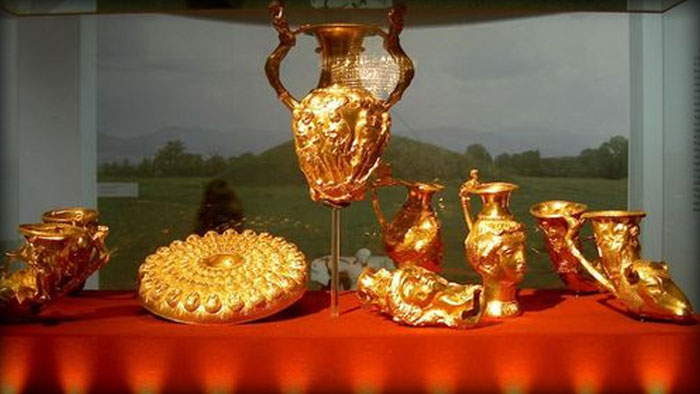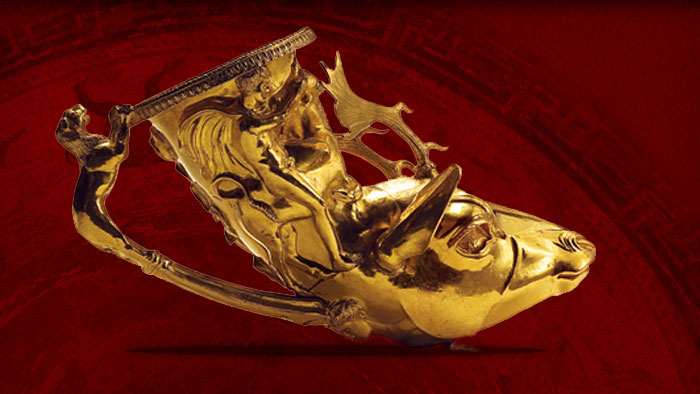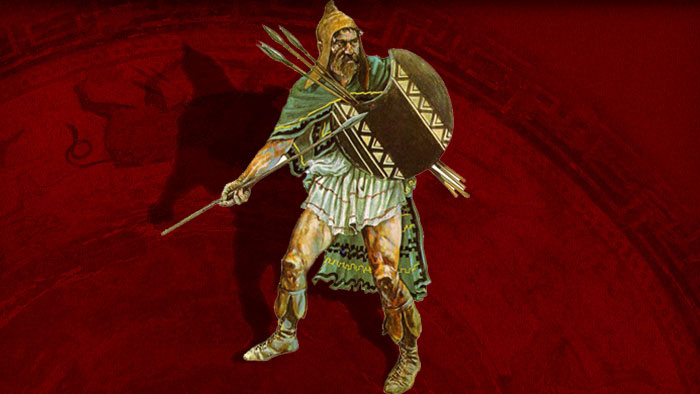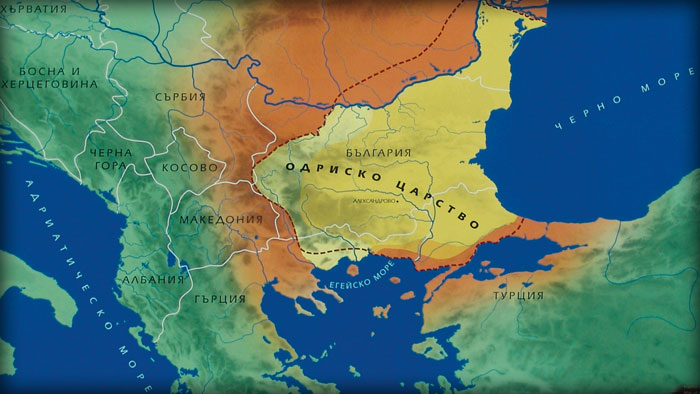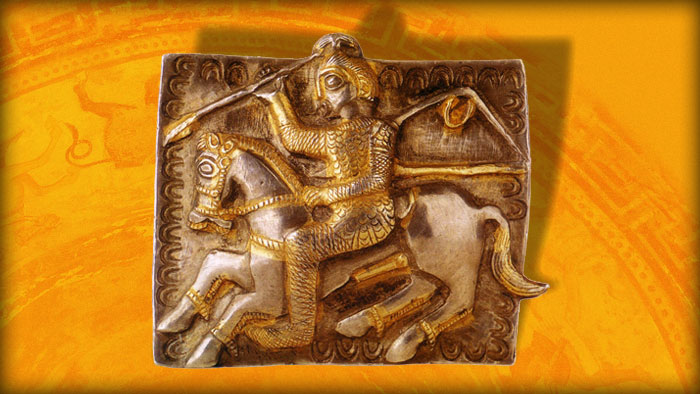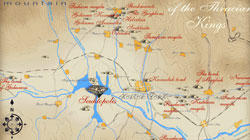The Thracians
In I millennium B.C. Thracians were one of the largest people in Europe. Divided into many tribes, they dwelled the eastern parts of the Balkan Peninsula as well as some areas in north-western Asia Minor. One of the most powerful tribal groups was that of Odrisses - Southeast Thrace, Bessi - in the Rhodope region, Getae - in the north-eastern regions, Triballi - in today’s north-western Bulgaria and Vitini - in Asia Minor. In the fertile plains of Thrace agriculture was developed, while people living in the mountain areas occupied with livestock breeding. Ore-mining, metalworking, pottery, leather and woodworking were well developed. War was a constant companion in their lives.
The most characteristic and best known, through archaeological artefacts manifesting the Thracian culture are burials of wealthy people, often in monumental tombs and under impressive mounds. The number of Thracian mounds in Bulgaria is between 10,000 and 60,000. One of the largest and most impressive is the mound near the village of Mezek, Svilengrad. Tombs discovered near Kazanlak, the village of Sveshtari, municipality of Isperih, and the one near the village of Alexandrovo, municipality of Haskovo, are world famous with their magnificent murals.
The Thracian treasures found today reveal the wealth of local aristocracy and are indicative of some of their religious rituals. Particularly impressive is the Panagyurishte gold treasure, consisting of nine gold vessels richly decorated with man-like compositions. The biggest treasure found so far is the one from Rogozen, consisting of 165 silver vessels, most of them richly ornamented. Smaller in size – containing just 5 artefacts, but of superb craftsmanship – is the treasure of silver vessels discovered near the village of Borovo, municipality of Rouse. Silver ornaments for horse harnesses with interesting figurative images are the characteristics of treasures excavated near Lukovit and Letnitsa.

